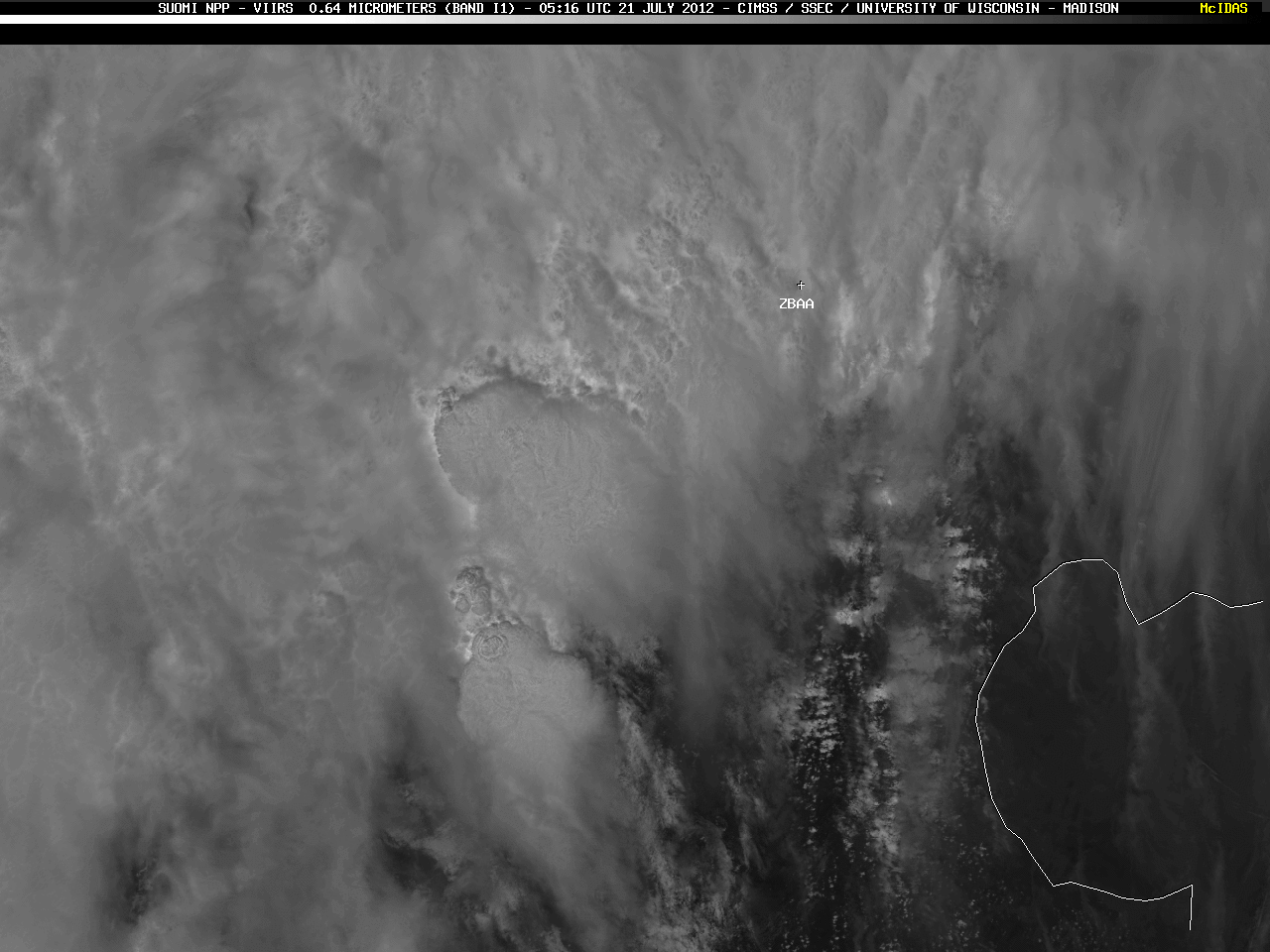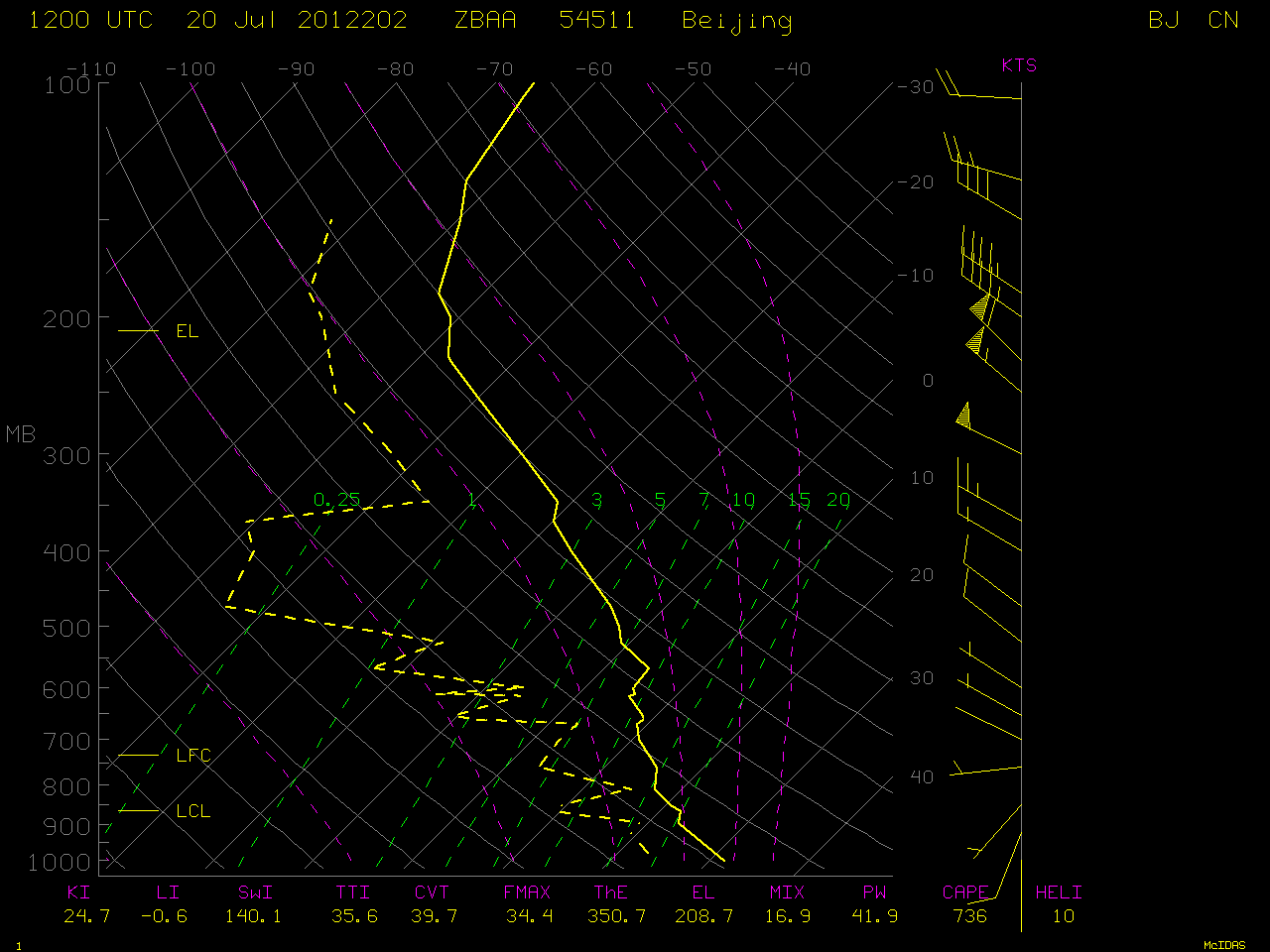Major flooding event in Beijing, China
A major flooding event occurred in the Beijing, China area on 21 July 2012, as the heaviest rainfall in over 60 years caused at least 77 fatalaties, cancelled over 500 airport flights, and forced more than 65,000 people to be evacuated. Much of the city averaged around 7-9 inches of rainfall within a 10-hour period, with the heaviest total rainfall accumulation being 18.1 inches (460 mm) in the Fangshan District of Beijing. McIDAS images of 1.25 km resolution 0.73 µm visible channel data from the Chinese FY-2E satellite (above; click image to play HD animation) showed an elongated band of clouds with embedded thunderstorms oriented from southwest to northeast across much of northeastern China. The small green box denotes the location of Beijing International Airport.
While there are some navigation issues associated with the FY-2E satellite (as noted by the amount of image drift during the animations), the position of the satellite at 105º E longitude offered a good viewing angle for this particular event. For a more detail meteorological analysis, see “Beijing flood of 21 July 2012” by Richard Grumm, NWS State College PA.
5-km resolution FY-2E 10.8 µm IR channel images (below; click image to play HD animation; also available as a QuickTime movie) revealed the development of very cold cloud top brightness temperatures (-60 to -75º C, red to black to white color enhancement) with some of these embedded thunderstorms, with evidence of a period of back-building of convection in the vicinity of Beijing after around 15 UTC.
5-km resolution FY-2E 6.8 µm “water vapor channel” images (below; click image to play HD animation) indicated a pronounced warming/drying signature (yellow colors) associated with a deepening shortwave trough that was approaching from the northwest. This approaching trough may have played a role in helping to enhance synoptic-scale upward vertical motion across the Beijing region, creating a more favorable enviroment supporting the formation and maintenance of strong convection.
A comparison of 375-meter resolution Suomi NPP VIIRS 0.64 µm visible channel and 11.45 µm IR channel imagery at 05:16 UTC (below) showed the development of some of the initial areas of embedded deep convective elements just to the southwest (upstream) of Beijing (station identifier ZBAA).
A time series of Beijing rawinsonde data Skew-T plots (below) showed the moistening of the atmosphere on 21 July, with the total precipitable water peaking at 50.4 mm (1.98 inches) at 12 UTC. The subsequent arrivial of dry middle-tropospheric air associated with the approaching shortwave trough can be seen after 00 UTC on 22 July, as Precipitable Water (PW) values dropped to 26.4 mm or 1.04 inch by 12 UTC.



